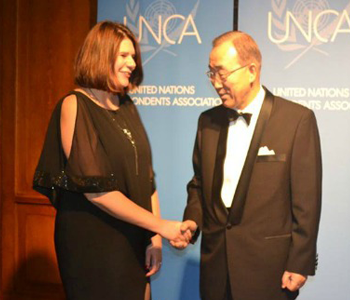
by Katinka | Jul 28, 2014 | 2014, Adoption, Adoptive Parents, Being Thankful, Belgium, Birth Parents, Childhood, Contest, Cooking, Cultural Differences, Discipline, Ethiopia, Family, Food, Health, Kids, Life Balance, Motherhood, Multicultural, Nutrition, Parenting, Siblings, World Motherhood, Younger Children
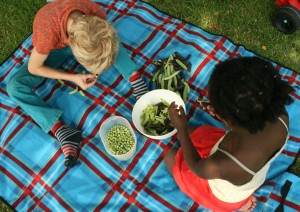 I’ve yet to meet a mom who is not monitoring her kid’s eating habits. Some might even be obsessed over it, others just make sure their kids eat enough or don’t overeat. Food can be filled with cultural, health or moral values and seems an important subject in most families I know.
I’ve yet to meet a mom who is not monitoring her kid’s eating habits. Some might even be obsessed over it, others just make sure their kids eat enough or don’t overeat. Food can be filled with cultural, health or moral values and seems an important subject in most families I know.
Every single one of the moms I know, seems to have her personal truth about food, or is at least searching for it. I know quite a few moms who vouch for strict vegetarianism, sugar free, all organic, low-carb, macrobiotic, low-fat or a mix of those. Others cook without lactose, gluten, sugar, eggs, nuts, soy and other allergy or intolerance boosters, by necessity or by conviction. But there’s also quite a number who just like to stick to their grandmothers’ favourite mashed potatoes with pork chops and piccalilli, because that’s what they were raised with.
Myself, I mix quite a bit of the above. My life is all about compromises. As a student, I used to be vegetarian, but now we eat vegetarian for only about 3 days a week. I also restrict the amount of lactose, because of my daughter’s (mild) intolerance. I make sure they eat at least one piece of fruit per day, but most days it’s two or three. And because we are Belgian, we have our two-weekly take out of ‘French’ fries, which originally came from Belgium. Or maybe even from Flanders.
I would not call myself obsessed, but I do keep a detailed mental track of what my kids eat in a day, and try to compensate by the 80/20 rule I adopted from a fellow World Mom: if they eat healthy for 80% of the time, that will make up for the 20% they eat junk.
When a mom has found her personal truth about food, obviously she wishes for her kids to eat by it; which they aren’t likely to do without a struggle. Not after they’ve tasted the Belgian fries, they won’t.
When my oldest was younger, I used to think I had it all together though. He ate whatever vegetable I gave him and his favourite dish was Brussels’ sprouts. I even recall quite some occasions on which I, the former vegetarian, bribed him into eating his meat by promising him an extra stem of broccoli. After a while, even the meat didn’t pose a problem anymore. He would eat whatever I served him.
Those good old days are over now.
It all started when our daughter arrived, age 2.5. She came from Ethiopia and was not used to our diet, not mentally, but also not physically. The first time I served her something green, she just threw it on the floor. Not out of a whim, but because she was clearly convinced it was not edible. She even tried to take it out of my mouth. Having been fed mashed dishes all her life, she was also not used to chewing. She did like bread and she did her best chewing it, but we had to take her to a physiotherapist to sooth her jaw pains. So we customized our cooking to her and introduced new stuff every once in a while. The one dish that never posed a problem was, indeed, our Belgian fries.
Meanwhile, our son, then 5, seemed to finally grasp that there was such a thing as rejecting food. I don’t know whether it was his sister’s example, the TV shows he started watching, his classmates or just normal evolution, but he started getting more selective each month. He also ate with his hands more often, just like his sister was used to. I went from having one kid with excellent eating habits to two picky, messy eaters.
After two years of convincing myself it was just a phase, this year I started implementing some strategies to get them to eat more balanced. Ultimately, what they were eating wasn’t all that bad but I was getting tired of the drama and the struggle to get them to eat what I believed was good for them. And most of all, I wanted them to develop the discipline to choose healthy by themselves, and not just because I ordered or rewarded them.
First, I tried the Yucky List. A colleague of mine had it at home, and it worked perfectly for her family. The idea is that it is only natural to have different tastes and that you don’t need to like everything. The concept is that each family member can have three dishes they really don’t like, on that list. When it is served, they are allowed to refuse it and have bread instead. Or hope for a mom who cooks two different dishes in advance. Of course over time, you can change your preferences but when a fourth dish you don’t like is served to you, you have to eat it, before you can put it on the list (replacing another).
It seemed promising but after a few weeks, the kids started to change their list about every other day. Way too many family dinners were filled with ‘I will put this on my yucky list for sure!’ and a lot of moaning and struggling, which didn’t really lighten the mood as I had hoped it would. We might pick it up again when they are older but for now, it doesn’t work for us.
After that, I changed my strategy to handing out a Yucky Coupon, Bah Bon in Dutch. I borrowed the idea from a friend who used to do cooking for youth camps. At these camps, each of the kids was given one Bah Bon for the duration of the camp. They could hand it in if they didn’t want to eat one of the meals that was cooked for them. Of course, they only could do that once. And the ones who still had the Bah Bon at the last day of camp, could hand it in, in exchange for ice cream.
So that’s how we do it now and it works like a charm! The kids both have their weekly Bah Bon, which is very conveniently posted on the magnetic wall next to the dinner table. Whenever they complain about dinner (or lunch or breakfast), we just point to their Bah Bon and remind them they can hand it in if they wish. No strict words, just giving them a choice and a visual reminder. Our son hasn’t missed his Sunday ice cream once. Our daughter has, once, and she’s not likely to miss another.
Of course, this will only work if ice cream is really a treat for your kids. Mine don’t really get candy or other sweets that often, so for them this works perfectly.
And of course, it’s still kind of a bribe. But I like it much more than the daily ‘If you don’t eat it, you can’t have desert’ bribe. For one, because we don’t have desert every day. Second, because they have to manage the discipline to work all week for their ice cream, rather than getting an instant reward. Third, because I don’t exactly sell the ice cream as a bribe or reward but rather as an interpretation of the 80/20 rule: if they eat healthy and balanced all week, it is all right to have something unhealthy every once in a while.
Most importantly, I like this system because the kids themselves really like this system. They like being in control of what they (don’t) eat without any pressure from us, and most of all they absolutely love our weekly ceremony when they officially hand in the Bah Bon they saved in exchange for their well deserved treat.
Do you have a personal or cultural take on the food you serve your kids? And do you need similar strategies to convince them about it?
This is an original post to World Moms Blog by K10K from The Penguin and The Panther.
The picture in this post is credited to the author.
If you ask her about her daytime job, Katinka will tell you all about the challenge of studying the fate of radioactive substances in the deep subsurface. Her most demanding and rewarding job however is raising four kids together with five other parents, each with their own quirks, wishes and (dis)abilities. As parenting and especially co-parenting involves a lot of letting go, she finds herself singing the theme song to Frozen over and over again, even when the kids are not even there...
More Posts

by Katinka | May 12, 2014 | 2014, Adoption, Adoptive Parents, Awareness, Being Thankful, Child Care, Childhood, Communication, Cultural Differences, Family, Health, Inspirational, Mental Health, Motherhood, Parenting, Penguin and Panther, Relationships, Special Needs, Stress, World Motherhood, Younger Children
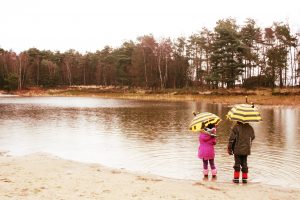 Even before I became a mother, I had a particular wish for my future children. Looking back at several not so fond memories of my childhood, I vowed I would do everything for them to have a better one. They shouldn’t have to grow up too fast. They would not have to feel unwanted, misunderstood or worthless. I would guard their innocence and happiness like a hawk.
Even before I became a mother, I had a particular wish for my future children. Looking back at several not so fond memories of my childhood, I vowed I would do everything for them to have a better one. They shouldn’t have to grow up too fast. They would not have to feel unwanted, misunderstood or worthless. I would guard their innocence and happiness like a hawk.
The major driving force behind the different attempts of therapy I tried throughout the years, was the well-being of my (future) kids. I wouldn’t allow mistakes in motherhood.
In fact, I didn’t want them to become like me at all. Just like the mother who really tries hard not to show her child how much she is freaked out by spiders, in order not to raise a little arachnophobic like herself. My list of not-to-pass-ons was just longer: low self esteem, perfectionism, fear of failure, social clumsiness, easy overstimulation and of course CFD: ‘continuously fretting disorder’.
The first five years of motherhood, I had the impression I could accomplish all this. I actually felt like the perfect mother: patient, involved, crafty, warm. I even managed to stick to my not-to-pass-on-list. It would cost me quite some effort, but I would not interfere when my son was building a crooked tower, so he could not catch my perfectionism. Trying not to pass on perfectionism while desperately trying to be a perfect mother. It may sound absurd now, but back then, it totally made sense.
Three years ago, my perfect balance in motherhood shifted drastically. When our son turned five, we couldn’t ignore anymore that he was going to develop at a speed different from his peers. At the same time, our adopted daughter arrived, aged two and a half.
They both forced me to face my demons better than any therapy has ever done throughout the years.
My son and I, we discovered developing an intelligence and sensitivity far beyond our physical age, is a struggle we share. Where his friends will watch a grazing cow on a field trip and complain about the stench, he will likely try to understand why this mammal has four stomachs, how to measure the circumference of the pasture and how long it would take for the cow to eat all that grass. And how much dung it would have produced by then, of course. His sense of humour is still a seven year old’s.
My daughter and I, we’ve been battling childhood trauma and attachment disorder together. We cried together in the shower numerous times, holding each other fiercely. The battle has been rough. It still is. Sometimes I just can’t comfort her like I should, because I need comforting myself. But she amazes me with a resilience I just can’t manage. She might be jumping on the trampoline and singing imaginary happy-songs, while I crash on the couch to mentally recover from holding her mourning and kicking little body for over half an hour.
It has been extremely painful to see my least fond childhood memories revive in my kids.
Comforting a son that feels like an alien, desperately trying to cover up his super powers because he just wants to blend in. Reassuring a daughter that follows me around the house like a puppy because she just can’t believe she won’t be abandoned again.
Painful. Heart wrenching. And feeding the CFD by the tons.
However, I’m seeing now that our struggles do not necessarily have to be the same. Because, you know, they have me. Of course I can’t protect them from being hurt. No mother can do that for her children. It’s one of the curses of being a mother.
But as it turns out, as a ‘damaged’ mother, I might be the perfect guide for my heavy-hearted children.
I’m teaching my son first handed how to make use of his extraterrestrial powers, without a need to blend in. I’m even coaching him in failing and making mistakes without believe it’s the end of the world. I surely acknowledge how important that lesson is. He’ll get it much earlier than I did.
I’m confidently ignoring outsiders’ advice on how to deal with my daughter’s anxieties, since I recognize how she feels. When she’s grieving, I guard her like an eagle that will not allow anyone to question or mock her tears of grief. I’m determined to give her what I never got. I will make her feel loved and understood. Unconditionally.
Me, I’ve only discovered how to find happiness after a painful and lonely journey.
I intend to show my children all the short cuts.
They will have a splendid childhood.
How do you see your own childhood reflected in your children? Is it mostly warm or can it be painful as well?
This is an original post to World Moms Blog by K10K from The Penguin and The Panther.
The picture in this post is credited to the author.
If you ask her about her daytime job, Katinka will tell you all about the challenge of studying the fate of radioactive substances in the deep subsurface. Her most demanding and rewarding job however is raising four kids together with five other parents, each with their own quirks, wishes and (dis)abilities. As parenting and especially co-parenting involves a lot of letting go, she finds herself singing the theme song to Frozen over and over again, even when the kids are not even there...
More Posts

by Katinka | Feb 17, 2014 | 2014, Adoption, Awareness, Being Thankful, Belgium, Birth Parents, Childhood, Cultural Differences, Ethiopia, Eye on Culture, Family, Friendship, Home, Life Lesson, Motherhood, Multicultural, Parenting, Penguin and Panther, Relationships, Siblings, World Motherhood, Younger Children
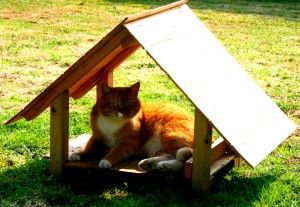 We have a cat. A lot of people have a cat. Ours is named Rino. As in rhinoceros, minus the “h” and the horn.
We have a cat. A lot of people have a cat. Ours is named Rino. As in rhinoceros, minus the “h” and the horn.
Looking back, I got him when he was still a little too small, so he definitely sees me as his cat-mom. He slept in the Big Bedroom during the first months of his life, with me stroking him upon every little yelp. When he wants to cuddle, he tucks his head in my armpit, as if he wants to get nursed. He’s the cuddliest cat I know. And the best frog catcher as well.
Rino is get-out-of-jail-free card. He radiates reassurance. Peace of mind. When I’m overwhelmed by motherhood, he can convince me to allow the children to come back downstairs after their time-out. He reminds me I prefer talking above time-outs.
When the kids are finally asleep, he crashes the couch with me. There’s nothing like the sound and feel of a purring cat to take the daily stress away. Did I mention he’s fat and orange? The perfect blanket. Matches most of my cloths too.
When our son is having a bad morning, he usually refuses to put on his cloths. He goes on strike on the couch, with his head beneath the cushions. We aren’t able to get through to him nor make eye contact. His sister will try, but she always manages to make things worse. Not her fault, and she earns her credits for trying the impossible.
And then Rino comes pawing in. Takes a few bites from his food and then goes straight for his ‘big brother’. The minute I tell my son who is coming for him, we see his face again. Eleven minutes, fifty three strokes and fourteen cuddles later, he will be dressed and heading for breakfast. The same goes for homework, violin practice and heart break: Rino will drag him through.
When our adopted daughter first met Rino, she nearly jumped to the ceiling. She only knew cats as thieves that should be chased from the orphanage’s kitchen, so she hissed and motioned to get him out, hiding behind my skirts. She didn’t develop a liking for stuffed animals either, with a brother sneaking up on her with those. He didn’t particularly like his new little sister those first months and couldn’t stop scaring her away, so we ended up hiding all the stuffed tigers and cats from them both.
Two years later, their bond has grown. They do continue teasing each other. They fight like little demons over who gets to open the curtains in the morning but an hour later in school the little one will call for her brother when she’s running from kissing boys. They always end up wanting to play with the exact same box of Legos that was untouched for weeks before, but just as frequently, they will team up against me, especially when candy is at stake. I was told that is universal proof they’ve developed a sibling bond.
The same goes for Rino. Our daughter considers him part of the family now. She demands we talk about him with first ànd last name, our family name, and she doesn’t believe it’s fair he’s not allowed to go to the zoo with us. He would love the big cats, you know. I’m glad Rino is visibly terrified inside moving vehicles so in the end our daughter’s more or less convinced he wouldn’t really like joining us.
A few weeks ago, my daughter asked how Rino came to our family. Did he come willing? Or was he taken from his mommy? After we hesitantly told her it was the latter, she immediately went to find him and whispered in his ear, “You’re just like me!” Ever since, she considers him her little brother even more.
He has become her mirror, in a way. Whenever she’s fantasizing about what she would like to tell her birth mother, he’s a major part of her story. She would like to send her birth mother pictures and drawings of Rino, but not of herself. Pictures of Rino sleeping in the bird house, of Rino coming from the woods when he hears our car approaching, of Rino sleeping with his paws in the air and head to the side, like a wrongly assembled toy. She wants to tell her all about him.
But most of all, she wants to tell her birth mother that we are such great and loving parents.
For Rino, of course.
Do you have pets that enrich your family? Do they help your children cope with life’s sharp edges? Feel free to share about their funny and serious contributions in your daily life!
This is an original post to World Moms Blog by K10K from The Penguin and The Panther.
The picture in this post is credited to the author.
If you ask her about her daytime job, Katinka will tell you all about the challenge of studying the fate of radioactive substances in the deep subsurface. Her most demanding and rewarding job however is raising four kids together with five other parents, each with their own quirks, wishes and (dis)abilities. As parenting and especially co-parenting involves a lot of letting go, she finds herself singing the theme song to Frozen over and over again, even when the kids are not even there...
More Posts
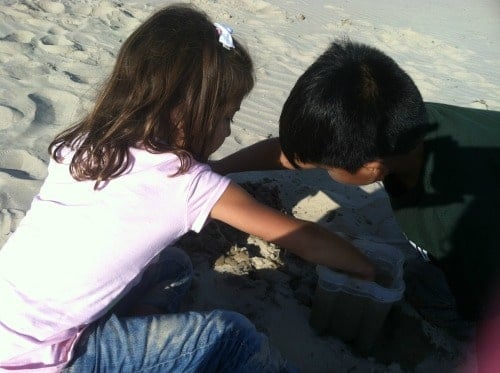
by Meredith (USA) | Jan 24, 2014 | Adoption, Babies, Bedtime Routines, Being Thankful, Birth Parents, Communication, Family, Husband, Infertility, Life Lesson, Motherhood, Parenting, World Motherhood
 I am the first person to admit that I had no clue about adoption before I adopted my son. I remember when I was growing up, I would tease my brothers that they “were adopted”. There was a girl in my first grade class who was adopted, but I was always told not to talk about it to her. I came to think that adoption was something that was a secret, and because it was a secret there might be something wrong with it. (more…)
I am the first person to admit that I had no clue about adoption before I adopted my son. I remember when I was growing up, I would tease my brothers that they “were adopted”. There was a girl in my first grade class who was adopted, but I was always told not to talk about it to her. I came to think that adoption was something that was a secret, and because it was a secret there might be something wrong with it. (more…)
Meredith finds it difficult to tell anyone where she is from exactly! She grew up in several states, but mainly Illinois. She has a Bachelor of Science degree in Elementary Education from the University of Illinois at Champaign/Urbana which is also where she met her husband. She taught kindergarten for seven years before she adopted her son from Guatemala and then gave birth to her daughter two years leter. She moved to Lagos, Nigeria with her husband and two children in July 2009 for her husband's work. She and her family moved back to the U.S.this summer(August 2012) and are adjusting to life back in the U.S. You can read more about her life in Lagos and her adjustment to being back on her blog: We Found Happiness.
More Posts

by Katinka | Dec 5, 2013 | 2013, Adoption, Adoptive Parents, Being Thankful, Belgium, Childhood, Cultural Differences, Culture, Education, Eye on Culture, Family, International, Kids, Life Lesson, Motherhood, Multicultural, Netherlands, Parenting, Penguin and Panther, Politics, Siblings, Traditions, Turkey, United Nations, World Events, World Motherhood, Younger Children
 As an adoptive mother of an Ethiopian Panther, I’ve grown an extra pair of antennas when it comes to racism.
As an adoptive mother of an Ethiopian Panther, I’ve grown an extra pair of antennas when it comes to racism.
Truly, a lot of really nice people distinguish my daughter from other children, based on her color. Even if it is meant to defend her, like calling me disgusting for letting her carry the groceries, it basically still is hidden racism. Should I tell her that people believe she shouldn’t be helping me out because it reminds them of slavery while her white brother is allowed to do the same chores? I’d rather have people call me names than let them wreck my daughter’s self esteem.
However, as I’m writing this, there is a HUGE racism debate going on in Belgium and even worse in The Netherlands, where it all started. And despite my racism antennas, I just can’t fully agree with the racism-yellers this time. Not even if they yell all the way from some United Nations office.
The debate is all about the ancestor of Santa Claus: Sinterklaas. You can read here about how Santa Claus evolved from our Sinterklaas, or Saint Nicholas, who is actually believed to be Turkish, who resides in Spain, has a white horse called Bad-Wheater-Today (Belgium) or Amerigo (The Netherlands), and celebrates his December birthday by coming over to our countries and surprising children with presents.
In the Netherlands he comes over on the evening of December 5th. Later that night, he comes to Belgium and delivers toys and sweets to be found in the children’s shoes on the morning of the 6th. It’s really a children’s celebration, full of magic and anticipation. You will bump into him just about everywhere during November.
Now, because Sinterklaas is getting old and forgetful, and has a lot of work to do within 24 hours, he has helpers. These helpers are all black, and hence all called ‘Black Peter’ (Zwarte Piet).
And that’s where all the accusative fingers point.
Indeed, this tradition can be seen as offensive. I, for a fact, believe it is partly based on a slavery and stereotype-loaded past, and a lot of people agree with me. Black Peter has long been depicted as a bit slow, barbaric (kidnapping and hitting the naughty children), dressed in clownish clothes, with stout lips and being submissive to his white boss.
Of course I agree this is an awful, insulting picture to brainwash our children with during the big Sinterklaas-Awaiting-Month-of -November. I also agree an outsider would be shocked, when he meets Sinterklaas and his Black Peters for the first time, especially if oblivious to the folklore. And I honestly understand and feel the offense people take.
For me personally, Sinterklaas has me cringing with bittersweetness ever since I found out about his racist taint. I’m not even particularly fond of the Sinterklaas tradition anymore.
However, I also don’t agree that we are teaching our children racism, nor paying ode to slavery by honoring this tradition every year. Not any more, that is.
Since the 1990’s, we have a children’s holiday special on TV portraying the real story. Children are elegantly taught Black Peter is black – and not brown/colored/african – because he came down the chimney. No more, no less. Nobody really tries to explain why his clothes didn’t get black during his journey down the chimney.
It is just part of the mystery, just like Bad-Wheater-Today walking on rooftops or Sinterklaas having this enormous book in which the good and bad behavior of every single child is listed. It doesn’t make sense, but children buy it anyway.
In this TV-special, Sinterklaas is depicted as a bit senile. In fact his Black Peters are now the smart ones, all with different names according to their function or character. A bit like the Smurfs, and everyone likes the Smurfs, right?
For the past 20+ years, this special comes on every November. Along the way, children started to grow more afraid of this very strict and grumpy old man than of his joyous, candy throwing helpers. The Black Peters became the true friends of our children. And every Belgian child you ask about Black Peter’s color now, will patiently tell you the chimney-story.
To me, this shows our tradition is evolving from, I admit, a racist past, towards a new story. Just like it evolved into Santa Claus overseas—who, by the way, appears to imprison a whole lot of innocent, little people in a Siberia-like, harsh environment without paying them for their round-the-clock labor.
Therefore, I trust society may even evolve towards a tradition of White Peters in a few more years or decades. After all, with more and more houses being built without huge chimneys, we will sooner or later find out that Peter’s color is fading, won’t we?
I’m hoping that by the time this post runs, all the petitions –pro and con–the social media frenzy, any UN investigations and any public manifestations, will be over and done with. I truly hope no-one got hurt along the way, and that both camps have reached a certain level of understanding towards each other by the time Saint Nicholas wants to celebrate his birthday.
Because, you know, my children are already expecting Sinterklaas to send one of his Peters down our chimney on the 6th of December. Especially my very dark daughter is impatiently awaiting. I’d hate to disappoint her if he decided not to come this year, because he’s afraid to be called a racist. She would definitely not understand, mainly because she doesn’t see any resemblance between Black Peter and herself.
I’m confident Sinterklaas will make it, though. We are both alike, Sinterklaas and me. We’re already used to people calling us racist slave handlers. And we both know better than that.
Did you know about Santa Claus’s European past? How would you feel if he had black helpers instead of elves?
This is an original post to World Moms Blog by K10K from The Penguin and The Panther.
The picture in this post is credited to Sinterklaas Himself, who published it on Wikipedia, while undercover as Gaby Kooiman, under GNU Free Documentation License.
If you ask her about her daytime job, Katinka will tell you all about the challenge of studying the fate of radioactive substances in the deep subsurface. Her most demanding and rewarding job however is raising four kids together with five other parents, each with their own quirks, wishes and (dis)abilities. As parenting and especially co-parenting involves a lot of letting go, she finds herself singing the theme song to Frozen over and over again, even when the kids are not even there...
More Posts

by Katinka | Oct 21, 2013 | Adoptive Parents, Being Thankful, Belgium, Birth Parents, Childhood, Cultural Differences, Domesticity, Family, International, Interviews, Kids, Penguin and Panther, Relationships, Siblings, Special Needs, Uncategorized, Working Mother, World Moms Blog Writer Interview, Writing, Younger Children
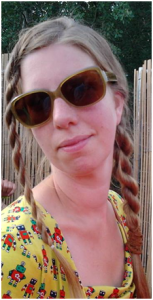 Where in the world do you live? And, are you from there?
Where in the world do you live? And, are you from there?
I was born, raised and proudly remain stuck in the Belgian mud. I would sometimes dream about moving abroad, but it turns out I’m quite happy staying right here. I do like to travel several times a year, mostly for work.
What language(s) do you speak?
My mother tongue is Flemish (which is basically the same as Dutch), but with Belgium being a trilingual country, I also speak French and I can understand German. Obviously, I also speak – and write – English. About ten years ago I also decided to learn Indonesian, but all I remember of it now are the words kamar kecil, which means I can actually ask where the bathroom is if I would make it to Indonesia one day.
In addition, I would love to learn how to read and write music, and to understand Amharic, the first language of our daughter.
When did you first become a mother?
This is a tricky one, because in my experience, I can call on two firsts. Two totally different ways of expecting a child, of becoming a mother, both wonderful and intense. In 2006, I first became a mother when our son was born, the one I love to call our cuddly Penguin. Five years later, in 2011, I first became an adoptive mother when we brought our two-year-old daughter home, our darling Panther.
Is your work, stay-at-home mom, other work at home or do you work outside the home?
Apart from being a full time mom, full time housekeeper and full time wannabe writer, I also have a full time job outside my home. Some might even say I’m building an exciting career as a geomicrobiologist, enabling me to go on missions abroad and to research amazing subjects, but they should know that my favorite moments are without doubt coming home, be it after a working day or a business trip.
Why do you blog/write?
I started blogging (in Flemish) during our adoption procedure, merely as a way to keep friends and relatives posted on any news we would get in those long years. Along the way, blogging became a kind of therapy, enabling me to vent frustrations and personal struggles, or to focus on optimism and fun facts. I also learned just how much I loved to write.
I kept on blogging until our daughter was home for two years. I recently decided to stop, mostly for the privacy of my children and because I felt like I was getting ‘addicted’ to blogging. It was a hard decision, disappointing to quite some readers who liked the plain honesty in my writing. But, as a go-between, I decided to start a low frequency, anonymous, English blog about life with my Penguin and Panther, and to contribute to WMB every once in a while. And in the extra spare time I have now, my newest endeavor is to write children’s books, which has long been a dream of mine.
How would you say that you are different from other mothers?
As a typically modest Belgian, I truly find it awkward to differentiate myself that way. I don’t believe I have something special about me as a mother, or a person for one. But since I have to, well, I guess I would be different from other mothers because my kids come in two opposite colors and with some extra needs. Our blond haired Penguin is an overly sensitive philosopher who understands more than is good for him, while our curly Ethiopian Panther deals with attachment, anxiety and health issues. They leave me both exhausted and enriched every single evening, but I guess that’s no difference to other mothers…
What do you view as the challenges of raising a child in today’s world?
I don’t even know where to begin! Every day is a challenge, when raising children, isn’t it? One of my major concerns though, is to let our children remain children as long as possible. I strive to keep a delicate balance between guarding my children innocence and purity, and still teaching them about the need for respect and care for the less fortunate or for our struggling environment. With today’s society going so fast, having everything within reach, leaving nothing to the imagination, I try to create an island of simplicity and ‘slowness’ for our children (and ourselves!) at home, where they can develop at their own pace. But when time comes, I still want them to be able to catch one of society’s speed boats that are racing by our island…
How did you find World Moms Blog?
I just bumped upon WMB through a cartoon someone shared. I think. My kids often beat me at ‘Memory’, so I can’t be sure about it. But I do remember I started reading and reading and couldn’t stop for another hour.
This is an original interview of our new writer in Belgium, K10K – pronounce it as Ka-ten-ka and you will come quite close to her real name – from The Penguin and The Panther
The image used in this post is credited to the author.
If you ask her about her daytime job, Katinka will tell you all about the challenge of studying the fate of radioactive substances in the deep subsurface. Her most demanding and rewarding job however is raising four kids together with five other parents, each with their own quirks, wishes and (dis)abilities. As parenting and especially co-parenting involves a lot of letting go, she finds herself singing the theme song to Frozen over and over again, even when the kids are not even there...
More Posts

 I’ve yet to meet a mom who is not monitoring her kid’s eating habits. Some might even be obsessed over it, others just make sure their kids eat enough or don’t overeat. Food can be filled with cultural, health or moral values and seems an important subject in most families I know.
I’ve yet to meet a mom who is not monitoring her kid’s eating habits. Some might even be obsessed over it, others just make sure their kids eat enough or don’t overeat. Food can be filled with cultural, health or moral values and seems an important subject in most families I know.





 I am the first person to admit that I had no clue about adoption before I adopted my son. I remember when I was growing up, I would tease my brothers that they “were adopted”. There was a girl in my first grade class who was adopted, but I was always told not to talk about it to her. I came to think that adoption was something that was a secret, and because it was a secret there might be something wrong with it.
I am the first person to admit that I had no clue about adoption before I adopted my son. I remember when I was growing up, I would tease my brothers that they “were adopted”. There was a girl in my first grade class who was adopted, but I was always told not to talk about it to her. I came to think that adoption was something that was a secret, and because it was a secret there might be something wrong with it. 



